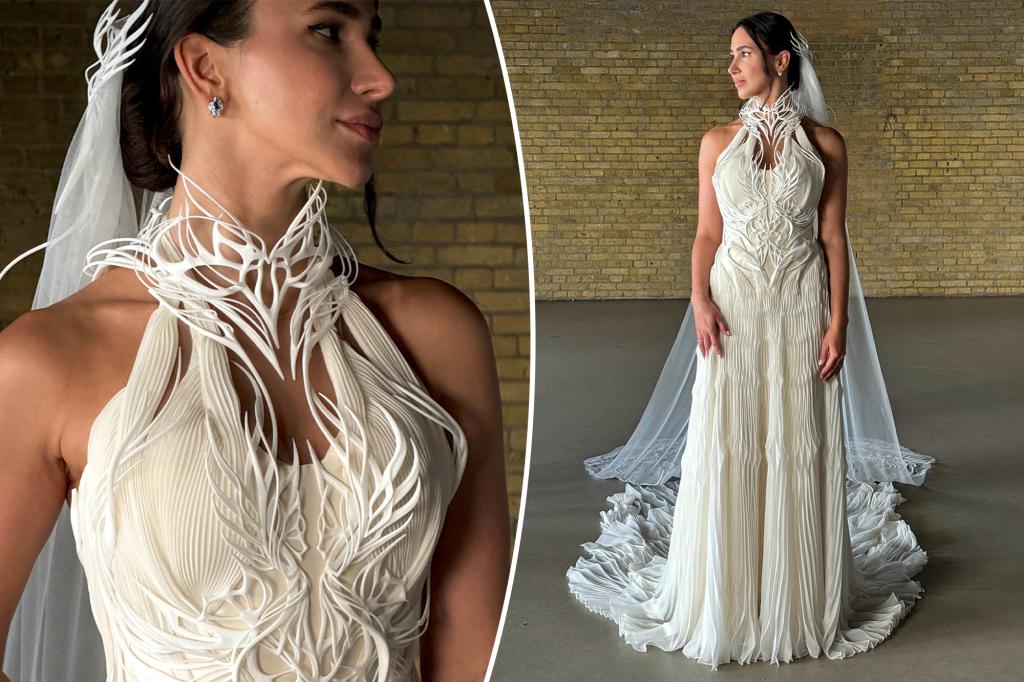Mariana Pavani made history by wearing a custom couture 3D-printed wedding dress designed by Iris van Herpen. The dress was a dream project for van Herpen, known for her innovative designs made from rigid synthetic materials. The dress featured a fantastical bodice that encased the bride’s torso and required 600 hours to create. Pavani underwent a 3D scan of her body to ensure a perfect fit for the dress, which struck a delicate balance between airy gracefulness and the rigidity of the 3D printed piece.
The bride’s now-husband introduced her to van Herpen’s work, and she had hoped from the beginning that her dress would incorporate 3D printing in its design. Fashion, for Pavani and van Herpen, is seen as a form of art, with the ability to express femininity and cutting-edge vibes through unique designs. 3D printing has opened new avenues for design in the fashion industry, providing more freedom for designers to create seamless, clean, and smooth pieces that are comfortable to wear.
While 3D printing in wearable fashion was limited in its infancy due to durability and flexibility concerns, advancements in materials have made it possible for designers like van Herpen to create practical and wearable 3D-printed garments. The lightweight, nylon material used in Pavani’s dress allows for flexibility and ease of movement, making it comfortable to wear and maintain. When Pavani put on the final gown, she felt powerful, feminine, and unique, expressing her gratitude and satisfaction with the outcome.
Iris van Herpen is known for her unique, alien-like designs created from rigid synthetic materials, such as the iconic “skeleton” dress featured in the Metropolitan Museum of Art. The bride, Mariana Pavani, was drawn to van Herpen’s work for its artistic qualities and aspiration for an outlier and unique wedding dress. The 3D-printed dress was a fusion of sculptural elements and fluidity, embodying femininity with a cutting-edge vibe that captured Pavani’s vision for her special day.
The tailor used ZBrush to design the bodice of the dress, which featured intricate details and required hours of printing to perfect. Pavani had multiple fittings and a 3D scan of her body to ensure a flawless fit for the final gown. Both Pavani and van Herpen view fashion as a form of art, with 3D printing providing new opportunities for creativity and innovation in the industry. The seamless, clean, and smooth finish of the dress was a testament to the evolution of 3D printing in wearable fashion.
The transformative power of fashion was evident as Pavani felt emotional and powerful when she first put on the 3D-printed gown. The unique design, combining the rigidity of 3D printing with the fluidity of hand-pleated fabric, encapsulated her vision for a one-of-a-kind and empowering dress. The successful collaboration between Pavani and van Herpen showcased the potential of 3D printing in creating innovative and extraordinary fashion pieces that challenge traditional design boundaries.


